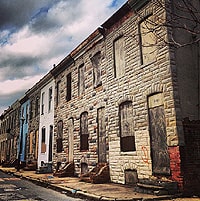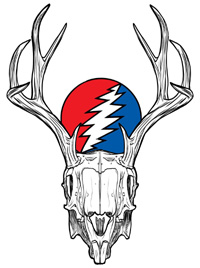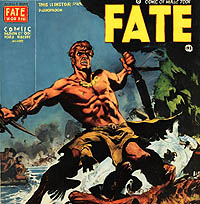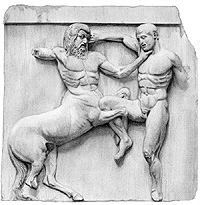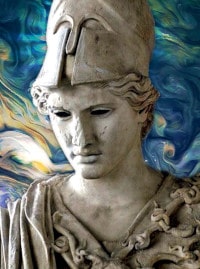Adam Smith was kind enough to invite me to speak on such investigations into the realm of archaeology as conducted by Graham Hancock in his Fingerprints if the Gods and men such as Randal Carlson. The former is a journalist turned holistic prehistory advocate and the latter is a builder who became interested in revising the revisionist archaeology of American. For the interested party, I would recommend the work of Arlington Mallory, an engineer of the WWII Era who conducted excavations of pre-Columbian iron hearths in Pennsylvania, Ohio and Virginia. The fact is, American pre-history was radically revised just before the Civil War in accordance with the ambition of a certain New England political lobbyist to establish an exclusively Anglo pedigree to the foundation of a nation, which was named after a Latino European who took credit for the discoveries of others.
No additionally irony is necessary.
I do not know if I will be able to speak on this podcast, whenever it shall be. However, I would like to help with some background work.
I have generally pursued these pre-Columbian questions in a limited fashion in the Plantation America series, from the 8th volume on in prequel sections. There, is, in my view, no great conspiracy afoot here. Rather, it seems that the establishment of the Smithsonian Institute by this nation in its infancy, caused a rush for the establishment of unassailable bedrock “truths” in search of Foundational Mythology. When the Anglo Only lobby one, it was a near run result, but resulted in a foundational myth rendered unassailable by seniority alone. It is curiously supported by the Bearing Land Bridge Doctrine.
Thus, poor science promoted by a political activist who misused his relationship with an eccentric phrenologist [1] became the bedrock “truth” of American history, along with the Bearing Land Bridge Exclusive Thesis, which is actually quite weak, but neatly tackled the peopling of North America without European participation, leaving the continent wide open for an exclusive Anglophone claim. Until the adoption of these claims it was widely recognized by European and American anthropologists that a “Sylvad race” occupied the woodlands on both side of the Atlantic, with Eastern Woodland Indians obviously a mixture of Asiatic and European immigrants. Illustrations of the period show the natives to be mixed or European, while our current art used in media and academia show Eastern chiefs to be ethnically Plains Indians.
Such false assumptions and a failure to look into the past without warping it with the lens of the present, bedevil any restorative inquiry into the ossified revisionist history we have been bequeathed as an enshrined national mythology.
I have a layman's interest in this subject, but no depth of knowledge or interest in further involvement in the question of revising what is revisionist establishment archaeology. I have only two history projects left to me: Plantation America, which is an attempt to correct extreme revisionism in the American historical record by establishment academics, and the Sons of Aryas project on ancient European origins, which faces no great ideological barriors.
The later may bear somewhat on the subject of Hancock's work. I have viewed three podcasts with Hancock and Joe Rogan, two “New Age” lectures by Hancock, a series of four high quality video documentaries by Hancock, and appreciate his work. He is a hopeless cosmic oatmeal cookie searching for the metaphysical kumbayah group hug of human intersectional ascendancy. He is not a kook, but rather a psychodelic ideologue along the lines of McKenna, author of Food of the Gods. I value his work and shy away from his desire to prefigure the evidence with a globalist paradise. In this he is very congruent with Carlson's view that man is a fallen race of angelic beings who have become separated from an ancestral “sacred geometry.” There is much in this that appeals to me in terms of the very good practical examination of the archaeological record conducted by these men and others which far exceeds in legitimacy the clinging of establishment scientists to the highly politicized pseudo-science of the 1840s and 1850s.
Rather than join in the debate, such as it may be, I would prefer to offer some persepective.
In Part 2, I will examine the question of a “deeper antiquity” posited by Hancock and Company not from our perspective, but from the ancient perspective I have spent much of my life reading in. What did the most ancient authors think of those who had come before them?
Until then, I would recommend to the reader interested in this question a reading The Book of Job, which is the oldest book of the Bible, the Epic of Gilgamesh, which is our eldest extant piece of Western literature, Prometheus Bound by Aechylus which tackles the question of man's technological patrimony, and The Odyssey of Homer. I will be citing all of these in Part 2.
Additionally, Worlds in Collision, by Emanuel Velikovsky, a book I read as a teen from my father's library and reread in my early 30s, is more useful than Eric van Danikan's Chariots of the Gods, which is not unworthy of a read. These two authors of my childhood are essentially the Hancock and Carlson of their era.
Notes
-1. One must read Mallory's work on Pre-Columbian America for the details. American mainstream archaeology, as with pre- Civil War history, is essentially a sloppy sham that can only be believed as presented by the political mind, rather than the inquiring mind. It is my view that the American Collective Consciousness, has been cultivated along a political polarity that prevents critical inquiry.


